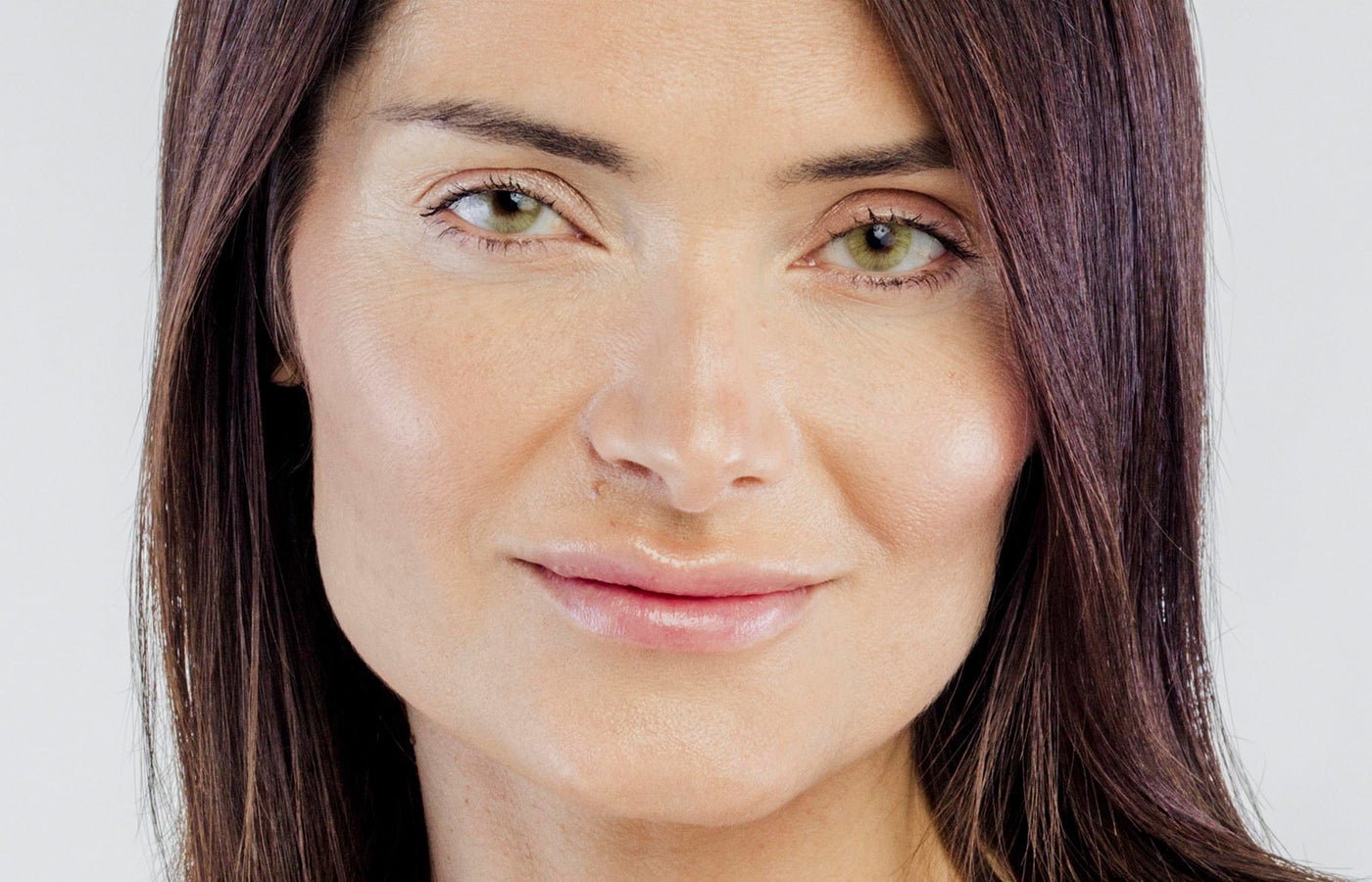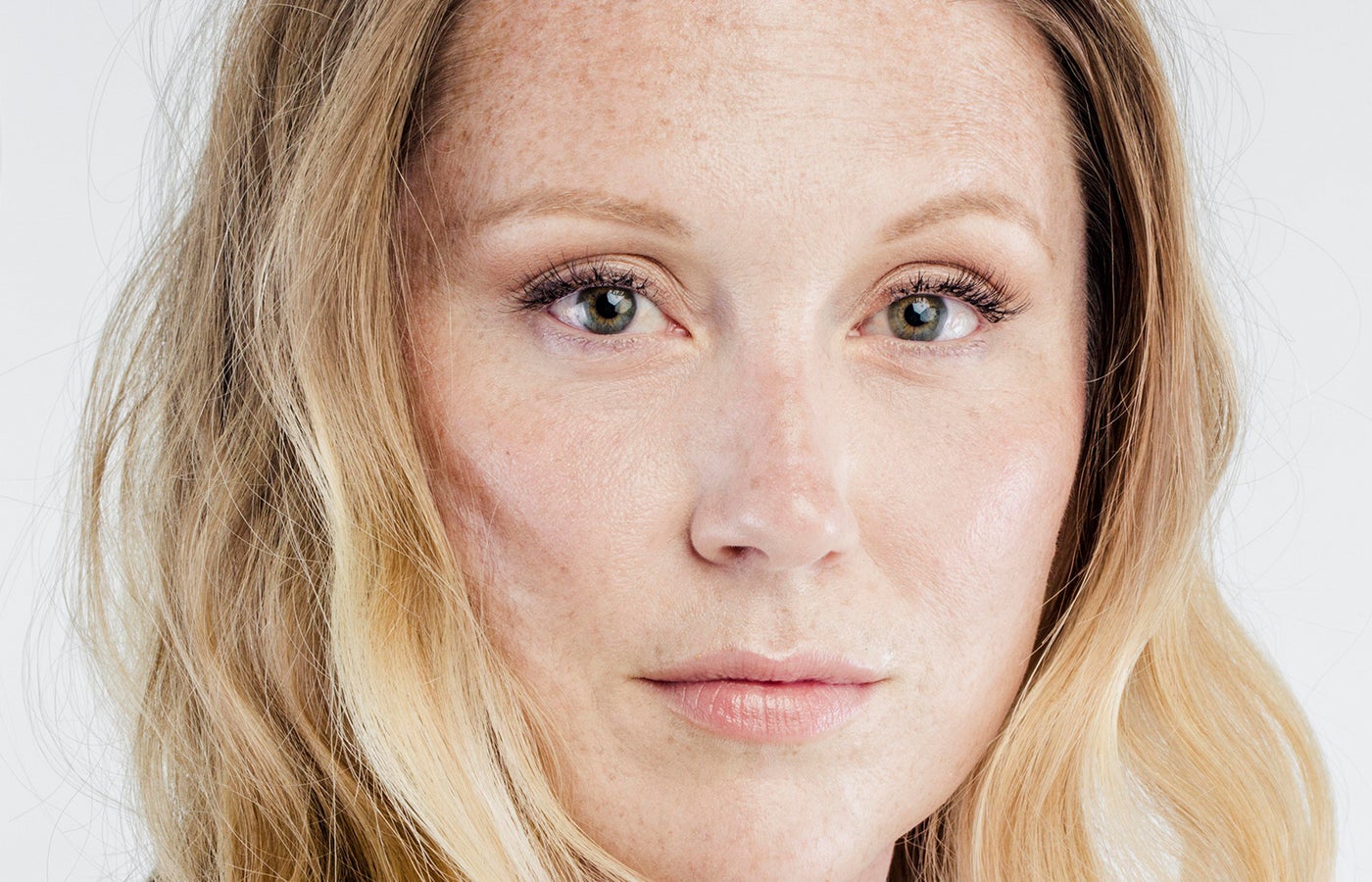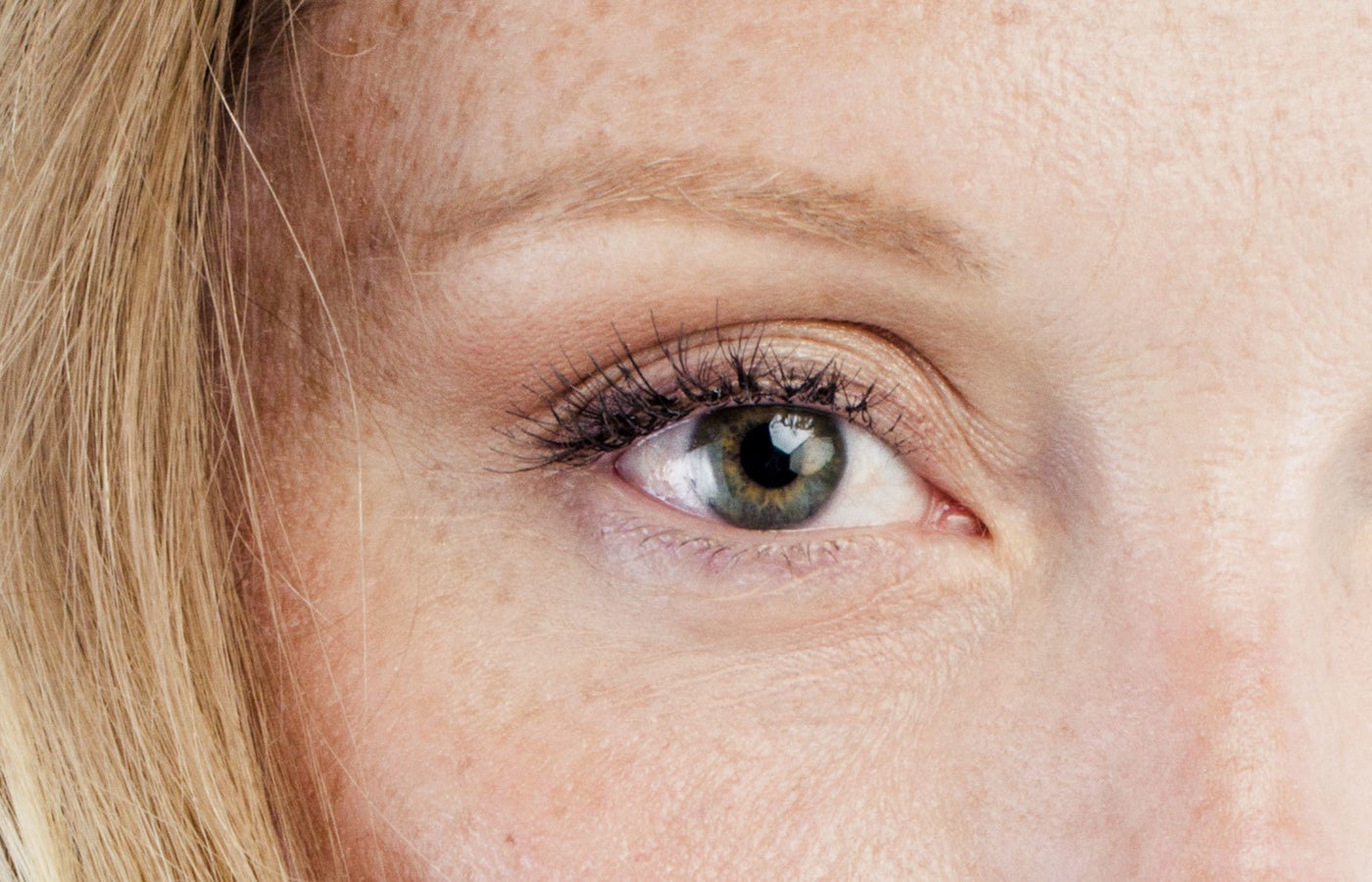A nonsurgical facelift is a combination of noninvasive or minimally invasive skin rejuvenation treatments intended to refresh aging and damaged skin.
This usually involves a handful of cosmetic procedures that variously smooth fine lines and wrinkles, exfoliate or remove damaged surface skin, boost the production of new collagen and elastin, and provide a lifting effect. You can address skin concerns such as sun damage, skin laxity, acne scars, and more.
It allows you to avoid invasive procedures, like a surgical facelift—and the attendant incisions, anesthesia, and scarring of plastic surgery—while still reaping moderate anti-aging benefits.
Dr. David Mabrie, a facial plastic surgeon in San Francisco, says “About 10 years ago, we pivoted from surgical methods to dermal fillers and neurotoxins, to rejuvenate the face for people needing only a mild to moderate lift. These techniques have been refined—and patients are benefiting, with more natural outcomes.”
Pros
- There’s minimal downtime. Noninvasive treatments may leave you swollen or bruised for a few days, but they still carry significantly less downtime than facelift surgery, which can put you out of commission for up to three weeks.
- The only form of anesthesia you’d need for any of the involved treatments would be a topical numbing cream (not general anesthesia or sedation).
- Because these treatments are less invasive than surgery, they come with fewer potential health risks.
- According to RealSelf members, the average cost of a nonsurgical facelift is significantly lower than with facelift surgery.
Cons
- You won’t get the same degree of lifting and tightening you can expect from a surgical facelift.
- Your nonsurgical facelift is unlikely to be a one-and-done procedure. You may not be able to get all your individual treatments done in the same day, and some require a series of treatment sessions for optimal results.
- All nonsurgical treatment options require ongoing maintenance treatments in order to keep up results—some, as often as three to four times a year.
- While the initial investment for a nonsurgical facelift is considerably less than it is for surgery, maintenance treatments could quickly add up to as much (or more) than the cost of going under the knife.
- Average Cost:
- $4,610
- Range:
- $2,000 - $8,250
Since a nonsurgical facelift is a group of treatments tailored to your specific needs, it can be tricky to determine a one-size-fits-all cost estimate.
“The [cost] depends on the type and number of nonsurgical procedures you’re having, who is providing them, and where you live,” says Newport Beach, California, plastic surgeon Dr. Larry Nichter.
Your best bet for anticipating your cost is to have a consultation with two or more plastic surgeons to get specific procedure recommendations and cost estimates.
The nonsurgical facelift photos in our gallery have been shared by the provider who performed the procedure, with the patient's consent.
The right combination of noninvasive cosmetic procedures can create a fresher, more youthful appearance for people with mild to moderate signs of aging. “We treat patients in the age range of 30–70 with a nonsurgical facelift,” says Dr. Mabrie.
Talk to your dermatologist or plastic surgeon to determine the best nonsurgical facelift options for you. They’ll be able to recommend the most suitable procedures for your specific skin concerns while taking into account your skin tone and skin type, which sometimes limit the procedures that can be performed without risk of adverse effects.
Just keep in mind that noninvasive techniques can’t address severely sagging skin or tighten underlying muscles, especially along the jowls and in the neck, like a surgical facelift or neck lift would.
It may be helpful to think of a nonsurgical facelift not as a substitute for a surgical facelift but as a preventive treatment—undoing some damage and taking good care of your skin can put off the need for a surgical facelift for many years.
Related: The Best Treatments for Different Types of Skin Laxity
How well noninvasive facelift options will work for you depends on your anatomy, skin elasticity, and concerns, but a mix of these treatments is commonly used.
- Injectable fillers, such as hyaluronic acid–based Restylane and Juvéderm, can add volume to the cheeks, restoring their curves and slightly lifting the lower face. They can also fill out hollow temples, smooth marionette lines (extending from the corners of the mouth to the chin), strengthen a weak or recessed chin, and define the jawline. Some dermal fillers, like Sculptra and Radiesse, can also stimulate collagen production for up to three years, slightly firming the skin and boosting its radiance.
- Neurotoxins, like Botox, Dysport, Xeomin, and Jeuveau, temporarily relax muscles to help minimize the appearance of fine lines and wrinkles, particularly frown lines and forehead wrinkles. When they’re used in the forehead, they can subtly lift the brows. A combination of fillers and neuromodulators is often called a liquid facelift.
- Resurfacing treatments, such as chemical peels and lasers, can renew the skin’s surface by exfoliating away the top layers and increasing cell turnover. They can even out skin tone and texture, addressing sun damage and minimizing the appearance of wrinkles.
- Skin tightening treatments, including FaceTite and Ultherapy, use radiofrequency and ultrasound energy, respectively, to deliver heat to the collagen- and elastin-producing cells in the dermis. This kick-starts a reparative response that generates more of those key structural proteins for firmer, more taut skin over time.
- Thread lifts, another popular nonsurgical option, place dissolvable sutures under your skin, to serve as internal scaffolding that lifts and stimulates collagen production.
What to expect during your appointment(s) depends on which treatments you get.
- Fillers are injected, to add volume and shape or to smooth deep wrinkles. The process is quick (15 to 30 minutes) and tolerable, though deeper injections tend to hurt more. Some patients opt for numbing cream, especially in such sensitive areas as the lips and chin. Certain fillers come premixed with the local anesthetic lidocaine. To inject, the doctor will use a fine-gauge needle or a small tube called a microcannula. After each shot, they’ll massage the area to spread out the filler, for a natural effect.
- Botox and other neuromodulators involve quick, relatively painless pricks. Your doctor can apply numbing cream, but most people skip that step. After injections, you’ll be given ice packs to apply to the injection sites for 5 to 10 minutes, to minimize bruising and swelling.
- Chemical peels for nonsurgical facelifts are usually superficial. Before a light- or medium-depth peel, your provider may offer a local anesthetic. They then cleanse the skin, to remove any makeup or oil that might impede the peel’s penetration. Next, the chemical solution is applied for a designated amount of time (from a few minutes to as long as an hour) before being neutralized with water and wiped away. A layer of moisturizer or an occlusive balm follows, to soothe and protect freshly treated skin.
- Laser resurfacing during a nonsurgical facelift is usually non-ablative, meaning it will leave the surface layer of skin intact, which requires less downtime. (Ablative lasering could put you out of commission for almost as long as surgery would.) Most patients opt for numbing cream and ibuprofen. Once you’re numb, your doctor will apply a water-based gel, to protect your skin, and then glide the laser across the skin, stimulating cell turnover and collagen production. A non-ablative laser treatment usually takes about 30 minutes.
- Skin tightening treatments, like Ultherapy and Thermage, are notoriously uncomfortable, so pain medication (Percocet, Ativan, laughing gas, and a topical numbing cream) is generally standard. After a conductive gel is applied, your provider will use a handheld device to deliver energy into the deeper layers of skin, causing microdamage and boosting collagen production. A face-focused session should take between 45 and 60 minutes.
“The big question for patients is what order to undergo treatments,” says Dr. Dilip Madnani, a facial plastic surgeon in New York City. “A practitioner with access to multiple treatment options can develop your aesthetic care plan, based on your goals. Typically I suggest patients undergo Botox treatment prior to skin treatments. I like to have the collagen stimulating effects of a laser or peel to occur while the skin is not producing any dynamic wrinkles—it creates a smoother result. If they’re undergoing Ultherapy, then I suggest that the Ultherapy is performed before the fillers around the cheek and jawline, due to Ultherapy’s potential to degrade underlying filler. These are nuances that an experienced practitioner can guide you through,” Dr. Madnani explains.
Related: 5 Procedure Pairings to Do During One Derm Appointment
After injectables, you may have swelling and tenderness for at least a few hours. Bruising is another common side effect and, depending on the severity, can last anywhere from several days to weeks.
Laser resurfacing and chemical peels may leave you flushed and flaky for anywhere from a few days to a couple of weeks, depending on the depth and strength of your treatment. If you’re concerned about prolonged downtime, talk to your doctor about how your treatment plan can meet your goals without extensive lifestyle changes.
There’s no real downtime after energy-based skin tightening treatments, since they bypass the surface of the skin to target only the deeper layers. But you may look flushed and feel sore from the rubbing of the heated devices against your skin.
How soon you’ll see results depends on both the treatments you choose and how you, personally, respond to them.
“Results can vary, based on each person’s unique anatomy. In the hands of the right injector, patients can expect to see a significant difference with a nonsurgical facelift—restored volume to the [under-eye area], midface, and lips and definition/contour to the cheeks, chin, and jawline. Additionally, fine lines and wrinkles on the forehead and between the brows as well as crow’s-feet can be softened with neurotoxins,” says Dr. Mabrie.
The results of fillers and neuromodulators will be apparent within a week. Most fillers last from six months to a year, while toxins last three to four months.
The effects of a chemical peel will vary with the strength of the solution. After a lighter peel, your skin will heal quickly (or you’ll have no downtime at all). The results should be visible immediately or within a couple of days but may last only a month or two. Medium-strength peels may leave you red and flaky for a few days, revealing full results a week or two later. The effects may last closer to four to six months.
Lasers and skin tightening treatments can take up to six months for final results to show; it takes that long for skin to rejuvenate and grow new collagen. Laser resurfacing is often done in a series of three to six treatments, spaced about a month apart, so while you should see some improvement after every treatment, the final six-month countdown doesn’t begin until the last laser treatment. Tightening treatments are not done as a series—one Ultherapy or Thermage session should yield a result that lasts for up to two years.
You can extend the longevity of any of these treatments by taking good care of your skin with quality skin and suncare. “Most of these treatments treat the quantity of skin and facial volume,” says Boston plastic surgeon Dr. William LoVerme. “Be sure not to forget about the quality of skin by using medical-grade skin-care products and getting regular treatments from an aesthetician.”
“Results are cumulative, and patients may need follow-up visits in order to achieve the best results,” says Dr. Mabrie.
The possible procedures involved in a nonsurgical facelift run the gamut of noninvasive and minimally invasive options. After fillers, neurotoxins, lasers, chemical peels, and energy-based treatments, you have surgical procedures to turn to.
If you want long-lasting, dramatic results, a surgical facelift is your best option for full-face rejuvenation. You may also consider targeting specific areas—such as the forehead and brow, with a brow lift; the midface, with a cheek lift; the eyelids, with a blepharoplasty; or the jawline and neck, with a neck lift.
All of the above options involve surgically removing, redraping, and lifting the skin as well as tightening the underlying muscles. Downtime varies, but you’ll see a marked difference, and results can last for 10 to 15 years (and sometimes longer).











